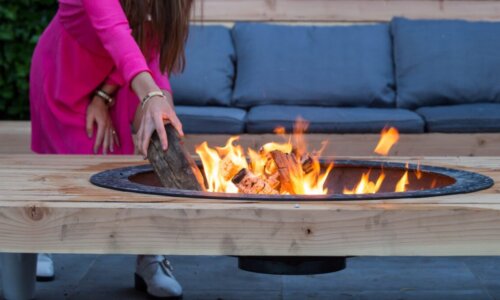The Best Patio Heater
We looked at the top 12 Patio Heaters and dug through the reviews from 18 of the most popular review sites including and more. The result is a ranking of the best Patio Heaters.

Our Review Process
Don't Waste Your Money is focused on helping you make the best purchasing decision. Our team of experts spends hundreds of hours analyzing, testing, and researching products so you don't have to. Learn more.
Our Picks For The Top Patio Heaters
- 1. EAST OAK One-Touch Double Layer Patio Heater
- 2. Cuisinart Lightweight Anti-Tilt Patio Heater
- 3. Lasko Designer Series Adjustable Thermostat Patio Heater
- 4. AmazonBasics Tower One-Touch Patio Heater
- 5. Hiland Pyramid Quartz Tube Patio Heater
- 6. PAMAPIC Commercial Gas Outdoor Standing Patio Heater
- 7. FDW Easy Assemble Pedestal Patio Heater
- 8. BELLEZE Cozy Tip-Over Protection Patio Heater
- 9. Outland Living Firebowl CSA Approved Patio Heater
- 10. hOmeLabs Premium Drink Shelf Tabletop Gas Patio Heater
- 11. TRUSTECH Infrared Patio Space Heater & Remote
- 12. Dr. Infrared Heater Carbon Patio Heater & Remote
Once the weather starts cooling down, warm up your outdoor space with this patio heater. It's able to radiate heat at a distance of up to 18 feet and is made using a durable 304 stainless steel. The heater has recently been upgraded to provided added safety by increasing the stability of the base.
Multiple Finishes AvailableYou'll find this patio heater comes in a choice of finishes, including bronze, blue and stainless steel.
Since this patio heater is portable, you can use it on the porch during weeknights and then take it camping on the weekends. It fits neatly on any table top and offers three different heat settings. The built-in safety tilt switch ensures the unit powers down automatically when tipped over, giving you piece of mind.
Travel-Friendly OptionThis patio heater has the option of being connected to a 20-pound propane tank if needed.
Forget the hassle of driving to the store for more propane when you have this patio heater on your patio. Simply plug in this beautiful heater and let the oscillating function spread warmth to everyone around.
Electric HeaterThis patio heater is small and only needs a regular outlet to heat up your small porch or patio.
With the heat coming down directly over your head from this patio heater, you are sure to feel warm even in the coldest weather. This simple design works with a standard propane tank and spreads heat in all directions with its mushroom-style radiant shield.
Radiant Overhead HeatThis patio heater brings the heat to everyone with its overhead radiant heat distribution.
Buying Guide
Enjoy the fresh air as you step outside to your patio or back yard where you might be entertaining friends with a barbecue and drinks or playing some relaxing games like bocce or cornhole. But if it’s cold outside, these activities are much less fun and you might find your guests shivering and asking if you can move the party inside.
This is something we deal with regularly in most climates, since the weather is constantly changing from warm to cold as seasons and weather patterns shift. To combat this occurrence of cold weather at the wrong time, we can use patio heaters to pump some heat into our favorite outdoor hangout spots.
Patio heaters are often fueled by propane or electricity to provide the much-needed heat that we want as we try to enjoy the great outdoors in our backyards.
The most common patio heater designs incorporate the use of propane as the fuel that will provide heat to the surrounding area. With your convenience in mind, look for models that use the large 20-pound propane tanks that are common on most grills, as they are readily available and easy to get refilled or replaced. The propane tank hooks up to a hose via a threaded connection and the hose pipes the gas to its necessary location where you will need to both open a valve for it to flow and then ignite it to create fire. Most patio heaters will have simple operating instructions and a built-in ignition switch. This igniter is really useful and something you might want to make sure you have included in your new heater.
The size and shape of a propane patio heater are important in how it functions and what kind of use you will get out of it. A tall propane patio heater will have the hot element at the top of a stand that is higher than most people, which keeps the extremely-hot element out of reach of children or pets, so that can be taken into account as a great safety benefit of this style of heater. The tall units will usually have a large metallic shield that reflects the heat back down to the people standing near it. Some models add neat features like built-in shelves that can hold your drinks or a more stylish facade at the bottom where your propane tank is hidden.
To counter the tall, overhead designs of many propane patio heaters, there are also small fire-pit style ones that you can sit around and roast marshmallows while enjoying an actual fire. The fire-pit style propane patio heaters come in two main configurations. In one version, the tank is hidden underneath the heating element where the flames come out, and the other version has a hose that allows you to keep the propane tank farther away from the fire pit. They both have their pros and cons, but you might find that if you’re sharing one propane tank with your grill and your outdoor fireplace, it’s much easier to have the tank sitting away from the fire-pit since you’ll be moving it back-and-forth to the grill whenever you need it over there. The benefit of having the propane tank inside of the body of the fire pit is that you cannot see it and it’s more permanently stationed there until it runs low on fuel, in which case it’s generally very easy to remove them from the bottom cavity of the unit.
Electric patio heaters are another useful way to bring heat to the outdoors. These will often be smaller, and therefore more well-suited for small patios or even semi-indoor rooms like porches and sunrooms. Electric heaters will need a source of electricity from the nearest plug and they use either heated coils or a ceramic element that creates the heat which is blown into your area with an internal fan. Electric patio heaters are easy to use and don’t require ever filling up a propane tank, so owning one is more straightforward and doesn’t require the same amount of upkeep. However, a propane heater will put out much more heat than an electric one, so be aware of the tradeoff.
Why we recommend these patio heaters?
Products Considered
Products Analyzed
Expert Reviews Included
User Opinions Analyzed
Our experts reviewed the top 12 Patio Heaters and also dug through the reviews from 18 of the most popular review sites including and more. The result is a ranking of the best of the best Patio Heaters.
DWYM is your trusted roduct review source. Our team reviews thousands of product reviews from the trusted top experts and combines them into one easy-to-understand score. Learn more.
The Best Bang For Your Buck
Lasko Designer Series Adjustable Thermostat Patio Heater
Key Takeawy
Forget the hassle of driving to the store for more propane when you have this patio heater on your patio. Simply plug in this beautiful heater and let the oscillating function spread warmth to everyone around.
What other experts liked
What other experts didn't like
What to Look For
- Propane is not the only fuel that can power patio heaters. If you have a liquid natural gas (LNG) line, you can use that to more permanently hook up your patio heater to operate from that fuel source.
- Be very careful with your placement of these outdoor heaters as they can be fire hazards if placed too close to flammable objects. Read the manual thoroughly before installing one.
- Check your propane tank by weighing it to see how much fuel is left. Plan ahead so you don’t run out of propane at a bad time!
More to Explore
Take a trip back in time to the days when you used a Bunsen burner in chemistry class. Outdoor patio heaters, the tall kind with the mushroom-style top, are actually just giant versions of the Bunsen burner. A simple tube takes a source of gas and burns it to locally heat the area under the mushroom-cap at the top.

























